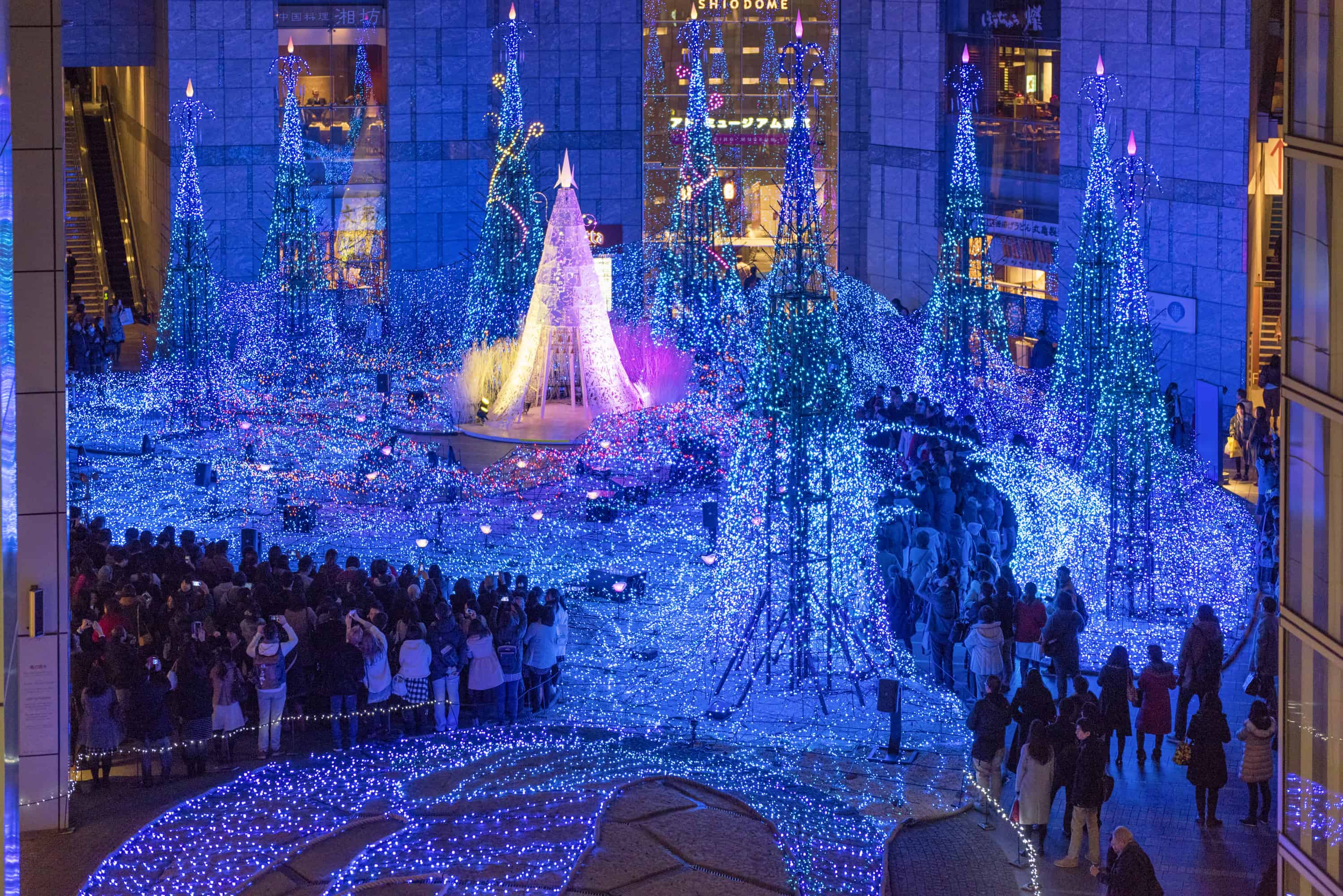Japan has no shortage of year-end traditions — but not all the ones you’re used to.
On Christmas Day the banks and markets are all open, and people largely go about their regular routines. This isn’t to say, of course, that Christmas and New Year’s aren’t celebrated. Quite the contrary. It’s just that the food, decorations, and traditions associated with these holidays are a tad different — and delightfully so.
In comparison with western traditions, one of the biggest contrasts can be found on Christmas Eve, which is essentially the Japanese version of Valentine’s Day. Young couples clog restaurants on December 24, so it’s a good idea to make dinner reservations as far in advance as possible for that night. Beyond this, Christmastime is, at least superficially, somewhat similar to what you’d find at home.
Markets pop up everywhere, lights illuminate public areas, and retail sales see a rise. But the commercialism isn’t on quite the same scale as you find in the U.S. While the lore of Santa looms, Christmas gift exchanges are mostly for children.
That’s why, perhaps, the biggest Christmas excitement is found at Disneyland, for the annual Christmas Fantasy experience. There’s food, fireworks, candy, you name it — a full-on holiday-spirit extravaganza for kids.
From there, however, the Christmas and New Year’s experiences in Japan depart from those in the west. Essentially, Christmas is the secular holiday, and New Year’s is the spiritual one. Here’s a primer on what to expect if you’re in Japan for the eminently enjoyable holiday season.
The decorations
Much like you find in America, high-traffic public spaces are decorated and illuminated for Christmas. Malls, restaurants, and pedestrian areas are blindingly bright.
What you won’t see, however, is a religious element. Nativity scenes are nowhere to be found. Since so little of Japan identifies as Christian, Christmas is strictly a secular holiday. New Year’s, however, has a very strong connection to Buddhism, the most common religion in Japan.
That’s why the Japanese completely redecorate between the two holidays (unlike in America, where people typically leave Christmas decorations up until after New Year’s). The Christmas lights come down, and out come the kadomatu. These are small decorations made of bamboo, pine, and plum branches, placed outside houses. Pine, in particular, symbolizes longevity.
You might also see shimenawa, which are twisted straw ropes that protect sacred buildings such as temples from evil spirits. And if you’re invited to a person’s home, you might see on a home altar. Kagami mochi are two round rice cakes stacked atop one another, with a mandarin and leaf on top. Kagami mochi symbolizes good fortune in the year ahead.
The food
Everyone looks forward to Christmas dinner, right? Japan is no exception, so it’s important to get your order in early with KFC.
Yes, you read that right. Fried chicken is a staple of Christmas dinner in Japan, with KFC taking orders several weeks in advance. The tradition started in the ‘70s, when KFC first arrived in Japan and began advertising the “party bucket” as the perfect way to celebrate Christmas. The idea stuck, and KFC is now synonymous with the notion of a family Christmas dinner. The traditional dessert is strawberry shortcake.
When New Year’s rolls around, you can expect a shift away from indulgent foods to ones rich in symbolism. They tend to be mild, too, to give the digestive system a break from holiday excess.
Starting on New Year’s Eve, for example, many people eat soba noodles, which are made of buckwheat flour. Better for you than regular noodles and easy on the stomach, soba noodles are associated with good luck in the New Year.
On New Year’s Day, families typically share a large, multilayered bento box called osechi ryori. There’s a wide range of foods in each compartment, but the overall idea is to emphasize that happiness and wealth will continue throughout the year.
In the days that follow, a soup called zōni is commonly served. The recipe varies region to region, but it’s typically a broth that contains vegetables and sometimes seafood — and always mochi. The decorative kagami mochi that sit on a shrine as decoration for New Year’s are often used in the soup after January 11, broken apart with a wooden hammer or one’s hands (never with a knife, which has negative connotations).
The traditions
New Year’s traditions, many of them Buddhist in origin, are especially important to Japanese culture.
Just before midnight on December 31, bells toll across the country. Temples ring their bells 107 times before midnight, then a 108th time just after the start of the year. This represents the 108 human sins in Buddhist belief, but also a purging of the 108 worldly desires in every Japanese citizen.
New Year’s Day isn’t all solemn and serious, however. Just as Americans have the Rose Bowl, Japan welcomes the final of the Emperor’s Cup, the championship of Japan’s highest professional soccer league (this year it will be held in Tokyo’s newly completed National Stadium). So, if you’re going to be in Japan for the holidays, settling into the couch for a sporting spectacle on New Year’s Day will get you cheering for the year to come — with 2020 a banner year for sports in Japan as professional athletes flock to Tokyo to compete. Sip a glass of otoso (sweet rice wine), a New Year’s day tradition, and warm your spirits. Kanpai!

